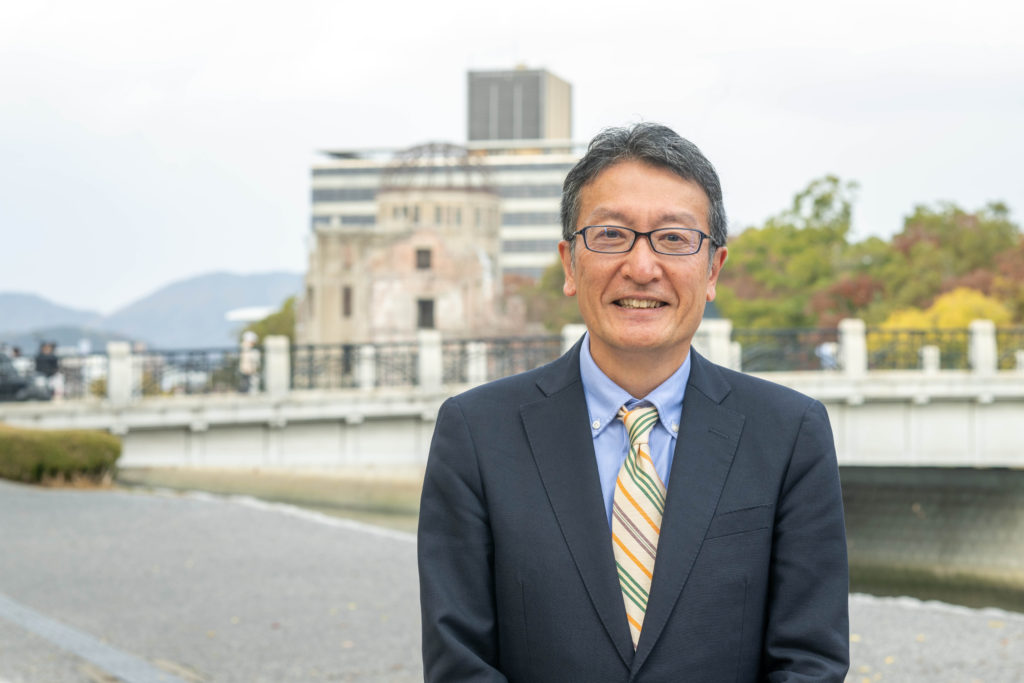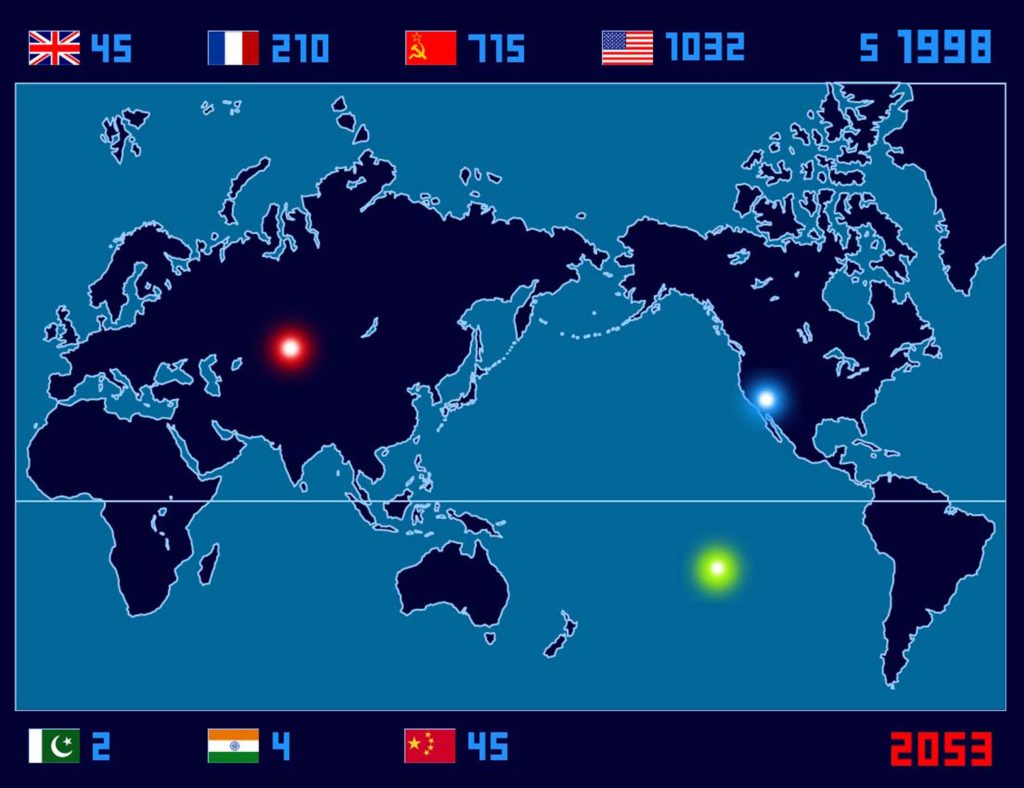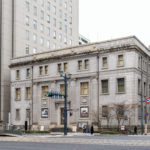Appealing for Peace as a Curator and Filmmaker
-“1945-1998,” a video work that conveys the madness of nuclear weapons-

The Hiroshima National Peace Memorial Hall for the Atomic Bomb Victims was established to collect and display the photographs of the atomic bomb victims and their memoirs and obituaries. Mr. Hashimoto Isao has been working here as a curator from 2019. After graduating from a university in Tokyo with a degree in commerce, he actually worked in the financial sector for 17 years. Most of his time at the bank was spent working as a currency dealer, but one day he saw a special TV program related to his job that became a turning point for him. “I heard someone saying on that program that ‘traders in the financial industry make a living just by taking a cut from the people who actually make and carry things’, and I felt like someone slapped me on the cheek. The work was also quite demanding at the time, and that caused me to rethink my future. I decided to go to art college at the age of 41, hoping to make a living in the art world, which I had always longed for.”

Mr. Hashimoto Isao, who spoke with us
He then entered the Department of Arts and Culture at Musashino Art University, which trains future curators. In 2001, in the midst of his fulfilling days of dealing with art, the terrorist attacks occurred in the United States. “I was at a sketching class at university the day after the tragedy. I felt a strong sense of discomfort at the gap between the reality of what was happening in the world and the fact that I was drawing sketches of models surrounded by sunlight and silence, and I felt a need to do something about it.”
That happened just around the time when he was thinking about the theme of his graduation project. Since he had a desire to deal with social issues, he started working on a video piece on the theme of nuclear testing.
The title of the work by Mr. Hashimoto is “1945-1998.” The animation depicts nuclear tests conducted around the world from 1945, when the first nuclear test in history was conducted, until 1998, when the Comprehensive Nuclear-Test-Ban Treaty was adopted and tests involving explosions were banned. The video contains no explanations at all, only flags, numbers, and flashing lights on a world map. The world’s first nuclear test was conducted in New Mexico, followed by the atomic bombings of Hiroshima and Nagasaki. With an electronic beeping sound, the time since August 1945 begins to be counted, and the number of tests conducted in each country is displayed.

©2003 Isao HASHIMOTO
The video work “1945-1998”
https://www.youtube.com/watch?v=cjAqR1zICA0
Starting with the Bikini Atoll in the Pacific Ocean, where the first postwar nuclear test was conducted, the flashing lights and electronic sounds show how the former Soviet Union, the United Kingdom, France, China, India, and other countries around the world have joined in the testing. The flags and counters shown at the top and bottom of the screen indicate which countries have been involved in the experiments and for how long. The flashing lights gradually increase in number and speed, conveying the fact that nuclear explosions have occurred all over the world.

There are so many flashes during the 60s and 70s, when the Cold War intensified, that there’s no time to catch one’s breath. Mr. Hashimoto himself recalls how he was “afraid of how long the flashing lights would continue” while producing the work.
There are no words or explanations, but the nuclear explosions that seem to cover the world map clearly show the “nuclear insanity” and bring anxiety and fear to the viewers’ hearts and minds.
“In preparing for the film, I researched nuclear tests and found that each test had a code name. For example, the code name for the hydrogen bomb test that contaminated Daigo Fukuryu Maru was ‘Bravo’, and the code name for the Indian nuclear test in 1974 was ‘Smiling Buddha’. I was very angry at the unbelievably rude and inconsiderate names given to the tests.”
After the release of the work, numerous inquiries came in from organizations engaged in peace activities, and “1945-1998” began to make waves around the world. Notably, an official of the Preparatory Commission for the Comprehensive Nuclear-Test-Ban Treaty Organization (CTBTO) asked Mr. Hashimoto to allow his work to be exhibited. After it was published on the CTBTO website, it has been on permanent display at the UN headquarters museum in Vienna since 2009. People from abroad who know his works have visited Mr. Hashimoto’s workplace and asked to shake his hand.
After working at the Hakone “Rene Lalique” Museum (Hakone, Kanagawa Prefecture) for 15 years, Mr. Hashimoto is currently with the Hiroshima National Peace Memorial Hall for the Atomic Bomb Victims. While in Kanagawa, he created two films on the theme of nuclear testing, and he is now making one film a year for special exhibitions at the Peace Memorial Hall based on the testimonies and experiences of atomic bomb survivors in Hiroshima.
“There are still so many things we need to know about war and peace,” says Mr. Hashimoto. “I would like to continue to work earnestly at my job in Hiroshima and to convey the unresolved issue of the atomic bombing to people around the world.”
●Mr. Hashimoto Isao
After graduating from college, he worked in the financial sector for 17 years before entering art school at the age of 41.
In 2003, his video work “1945-1998,” which he produced as a graduation piece, garnered attention both in Japan and abroad.
From 2002, he worked at the Hakone “Rene Lalique” Museum as chief curator for 15 years before moving to Hiroshima in 2017.
He currently works at the Hiroshima National Peace Memorial Hall for the Atomic Bomb Victims.
Tags associated with this article








